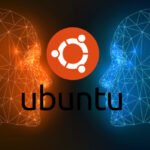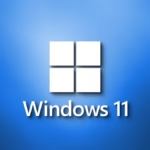It seems you might be referring to Linux, which is an open-source, Unix-like operating system kernel that serves as the foundation for many distributions (or “distros”). Linux is widely known for its robustness, security, and flexibility, making it a popular choice for developers, system administrators, and security professionals. Below is a detailed explanation of Linux:
What is Linux?
Linux is the core part (or kernel) of an operating system. The kernel manages hardware resources, such as the CPU, memory, and input/output devices. While Linux itself is just the kernel, it is commonly bundled with other software, including system libraries and user applications, to form a complete operating system (often referred to as a “Linux distribution”).
Key Features of Linux:
- Open Source: Linux is free to use and open-source, meaning the source code is available for anyone to view, modify, and distribute. This promotes transparency and collaboration among users and developers.
- Security: Linux is known for its strong security model. It supports user permissions, encryption, and robust access controls, making it highly secure for both personal and server environments.
- Stability and Reliability: Linux is renowned for its stability, which is one of the reasons it is used widely in server environments and mission-critical applications. It can run for extended periods without needing a restart, and it handles heavy workloads efficiently.
- Multitasking and Multi-user Support: Linux supports multiple users and allows the execution of multiple programs simultaneously (multitasking), making it suitable for both single-user desktop setups and multi-user server environments.
- Compatibility: Linux supports a wide range of hardware, from personal computers to smartphones, and is commonly used for Internet of Things (IoT) devices, routers, servers, and embedded systems.
- Customizability: One of the most significant advantages of Linux is its customizability. Users can tweak almost every aspect of the system, from the kernel to the desktop environment, making it highly adaptable to different needs.
- Large Community and Support: Since Linux is open-source, it has a vast and active community of developers and users who contribute to its development, provide support, and create documentation. Popular forums, mailing lists, and other resources are available for troubleshooting and learning.
Popular Linux Distributions:
Linux comes in a variety of flavors, known as distributions (distros), which cater to different use cases. Some of the most popular Linux distributions include:
- Ubuntu: A user-friendly and popular distribution for beginners, known for its ease of installation and wide software support.
- Debian: A stable and reliable distribution used for both desktops and servers, often serving as the base for other distros like Ubuntu.
- Fedora: A cutting-edge distribution that provides the latest software and features, often preferred by developers.
- CentOS: A free and open-source distribution based on Red Hat Enterprise Linux (RHEL), often used for servers and enterprise environments.
- Arch Linux: A minimalistic and highly customizable distribution aimed at advanced users who want complete control over their system setup.
Uses of Linux:
- Desktop Computing: Linux can be used as a desktop operating system for general-purpose computing. With graphical environments like GNOME, KDE, and Xfce, users can perform tasks such as web browsing, document editing, multimedia consumption, and gaming.
- Servers and Data Centers: Linux is the dominant operating system for web servers, file servers, and cloud infrastructure due to its performance, reliability, and security.
- Embedded Systems: Many devices, such as smartphones (Android), smart TVs, and routers, run on customized versions of Linux.
- Development and Programming: Linux provides powerful tools for programming and development, with support for almost every programming language and a wide variety of software development tools.
Conclusion:
Linux is a powerful, flexible, and secure operating system used across various platforms, from personal desktops to large-scale servers. Its open-source nature and the massive support from the global community make it an excellent choice for anyone looking to dive into system administration, development, or just exploring alternatives to proprietary operating systems like Windows and macOS.




